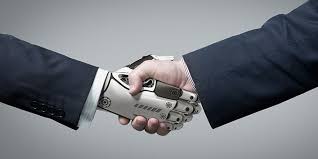Experts from The University of Texas at Austin recently gathered at Hook ’Em House during South by Southwest to discuss how robots, powered by advances in artificial intelligence, are gradually reshaping public perceptions.
For many years, the public’s view of robots was polarized—either as relentless, movie-inspired machines or as charming, futuristic helpers reminiscent of classic cartoons. Peter Stone, a professor and the executive director of Texas Robotics, explains that these binary perceptions are evolving. With AI breakthroughs and tools like ChatGPT, the narrative has become more balanced, opening the door to more nuanced conversations about robotics in everyday life.
During a panel discussion, Stone emphasized that as society becomes increasingly accustomed to technological assistance, robots could soon be widely integrated into our daily routines. “We’re reaching a point where having robots around isn’t something to fear—it’s more about how we perceive and ensure their safety,” he explained.
Bill Smart, a professor at Oregon State University, noted that acceptance of robotic helpers may ultimately depend on personal preferences. While some might welcome a robot that handles chores like cooking or lawn care, others may prefer doing these tasks themselves. Smart raised practical concerns as well, highlighting trade-offs such as privacy implications and economic impacts, such as choosing between investing in a personal robot service or supporting local service providers.
Smart also pointed out that robots in domestic settings could gather significant personal data. “While a robot might be programmed to assist in emergencies, its continuous presence means it could collect detailed information about your daily life,” he warned, emphasizing the need for careful consideration of data privacy and security.
Andrea Thomaz, CEO of Diligent Robotics, shared insights on the future of robot-assisted living. She suggested that for a home to be truly optimized for robotic assistance, its design—from storage to layout—might need to be rethought. This underlines the idea that while robots can be pre-programmed for general tasks in controlled environments, adapting them to the complexities of individual homes remains a significant challenge.
Stone believes that widespread adoption is inevitable, noting that many people already interact with technology in their homes, such as dishwashers or vacuum cleaners. “Creating a multi-functional robot that performs a variety of tasks affordably at scale is our next big hurdle,” he remarked.
At Texas Robotics, the momentum continues with a robust program that includes 13 robotics labs, over 40 faculty members, and more than 150 students and research engineers. The department offers graduate programs, hands-on research opportunities, and even an undergraduate minor, all aimed at advancing the development and safe integration of AI-enabled robotics into society.





